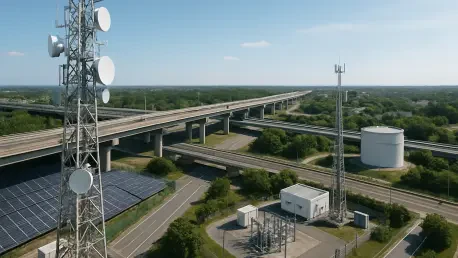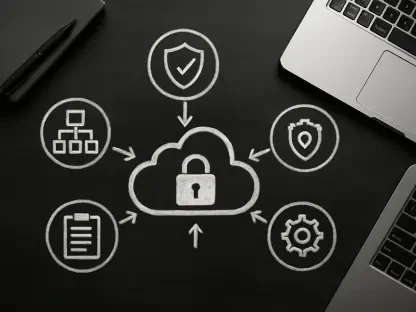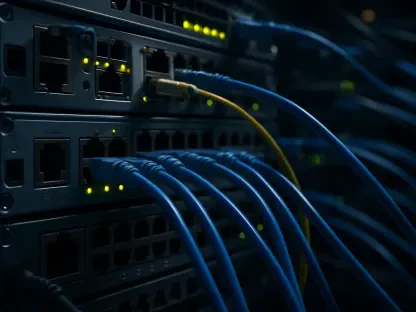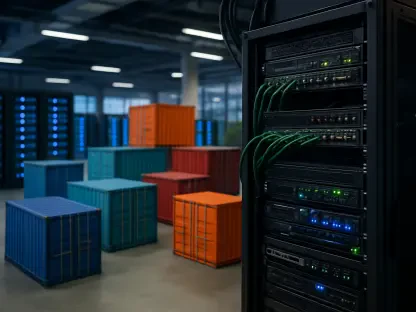Imagine a world where data travels at unimaginable speeds, connecting remote villages to bustling urban centers in the blink of an eye, while powering innovations that redefine daily life. This isn’t a distant dream but the tangible promise of 5G and the forthcoming 6G wireless technologies, which are poised to revolutionize global communication and influence. These cutting-edge networks offer far more than faster internet; they lay the groundwork for economic expansion, enhance digital mobility for millions, and drive groundbreaking applications across industries. However, their rollout also sparks intense international competition over infrastructure control and data security, raising critical questions about access and equity. As 5G gains traction worldwide, and with 6G research accelerating, the stakes for businesses, governments, and individuals have never been higher. This exploration delves into the transformative capabilities of these technologies, their economic and geopolitical implications, and the challenges that accompany such rapid advancement.
Revolutionizing Technology with 5G and 6G
The arrival of 5G technology has already begun to reshape the digital landscape with its remarkable features, setting a new benchmark for connectivity. Boasting ultra-low latency, lightning-fast data speeds, and the innovative concept of network slicing, 5G enables the creation of customized virtual networks tailored to specific business or application needs. This means industries can maintain seamless operations even under intense data demands, from real-time manufacturing processes to high-definition streaming services. Such capabilities are not merely incremental upgrades but foundational shifts that empower sectors like healthcare, logistics, and entertainment to innovate at unprecedented levels. The impact is evident in smart city initiatives where traffic systems and public safety are enhanced through instantaneous data exchange, proving that 5G is a cornerstone for modern infrastructure development across diverse global regions.
Looking ahead, the early groundwork for 6G signals an even more ambitious leap in wireless communication, addressing limitations seen in current systems. Spearheaded by initiatives like the US-based Next G Alliance, 6G development focuses on integrating artificial intelligence to optimize network performance, bolstering security measures, and prioritizing energy efficiency to support sustainable growth. With a target for commercial deployment around 2030, this next-generation technology aims to create a hyper-connected world where devices and systems communicate with minimal human intervention. Unlike 5G, which primarily enhances speed and capacity, 6G is expected to enable futuristic applications such as holographic communication and advanced autonomous systems. The emphasis on interoperable standards through global collaboration highlights a collective effort to ensure this technology serves as a unifying force rather than a divisive one in the international arena.
Economic Growth Through Global Adoption
Across the globe, the rapid adoption of 5G is acting as a powerful catalyst for economic progress, particularly in emerging markets eager to bridge digital divides. Nations like China are taking a leading role by investing heavily in 5G infrastructure projects in regions such as Africa, laying the foundation for enhanced connectivity that supports both local businesses and international trade. Similarly, countries like Brazil and South Africa are channeling resources into 5G to attract foreign investment, focusing on applications that modernize sectors like fintech and urban planning. This strategic embrace of advanced networks is not just about keeping pace with technology but about positioning these economies as competitive players on the global stage, capable of supporting innovative solutions that improve quality of life and drive sustainable development in communities previously left behind.
Beyond individual nations, international partnerships are amplifying the economic impact of these wireless technologies through shared innovation. A notable example is the collaboration between India and Japan, which is actively testing Beyond 5G and 6G technologies for cutting-edge applications like autonomous vehicles and Internet of Things (IoT) ecosystems. Such alliances demonstrate a commitment to harnessing next-generation networks for mutual benefit, fostering environments where technological advancements can thrive without the constraints of isolated development. The ripple effects are significant, as improved connectivity enables small businesses to reach global markets, supports remote education, and facilitates telemedicine in underserved areas. This global push underscores how 5G serves as a vital tool for economic inclusion, narrowing gaps between developed and developing regions while setting the stage for even greater transformations with the advent of 6G.
Geopolitical Dynamics and Network Control
The deployment of 5G and the anticipated arrival of 6G are not solely technological milestones; they are deeply intertwined with geopolitical rivalries that shape their global implementation. Major powers, notably the United States and China, are engaged in a high-stakes competition over who controls the equipment, standards, and infrastructure of these networks, viewing dominance as a matter of national security and economic advantage. This rivalry influences critical decisions, from which vendors are trusted to build networks to how data security protocols are established. Trade restrictions and regulatory discrepancies further complicate the landscape, creating a fragmented environment where the adoption of these technologies varies widely based on political alignments, often sidelining smaller nations caught in the crossfire of larger strategic interests.
Looking ahead, forecasts suggest a growing trend toward nationalization of digital infrastructure, with governments imposing stricter controls over cross-border data flows in the coming years. Network access might increasingly be linked to security partnerships or trade agreements, effectively turning connectivity into a geopolitical bargaining chip. Such developments raise concerns about equitable access to technology, especially for emerging economies that rely on foreign investment and expertise to build their digital frameworks. The regulatory fragmentation also poses challenges for multinational corporations that must navigate a maze of compliance requirements, potentially stifling innovation if harmonized standards are not prioritized. This complex interplay of technology and politics highlights the need for diplomatic efforts to balance national interests with the global benefits of seamless connectivity.
Strategies for Managing Risks
As 5G networks expand and 6G looms on the horizon, businesses operating in this dynamic environment face a unique set of risks that demand strategic foresight. Treating network access as a critical asset is paramount, especially given the geopolitical tensions that can disrupt connectivity or impose sudden restrictions. Companies are encouraged to build multi-region redundancy in their cloud services, ensuring operational continuity even if access is compromised in one area due to regulatory or political shifts. This approach not only safeguards against downtime but also positions firms to adapt swiftly to changing market conditions, maintaining competitiveness in technology hubs and emerging markets alike. Proactive planning, including diversifying supply chains for network equipment, further mitigates the impact of trade barriers or localized conflicts over infrastructure control.
For individual travelers navigating this connected yet complex world, personal security takes center stage amid the rapid technological shifts. Adhering to local encryption laws and utilizing trusted roaming services are essential steps to protect sensitive data while abroad, especially in regions with varying privacy standards. Employing device-level security measures, such as virtual private networks and regular software updates, adds another layer of defense against potential cyber threats that can exploit advanced networks. These precautions are crucial as connectivity becomes ubiquitous, ensuring that the benefits of high-speed access do not come at the cost of personal information exposure. Both businesses and individuals must remain vigilant, adapting to an environment where technological advancements and geopolitical uncertainties intersect, demanding a balance between leveraging opportunities and safeguarding against vulnerabilities.
Envisioning a Hyper-Connected Future
While 5G continues to redefine global communication, the conceptual framework for 6G is already emerging as a beacon for the next era of connectivity. This future technology promises to address existing challenges by embedding artificial intelligence to optimize network efficiency, enhancing security protocols to counter sophisticated threats, and prioritizing energy sustainability to support long-term environmental goals. Unlike its predecessor, 6G is envisioned to enable transformative applications, from real-time brain-computer interfaces to immersive virtual environments that could revolutionize education and entertainment. With a projected rollout by 2030, the groundwork laid today through research and investment signals a commitment to creating a digital ecosystem that transcends current limitations, offering connectivity that is not only faster but also smarter and more inclusive across diverse global contexts.
International collaboration stands as a cornerstone in shaping 6G, aiming to establish interoperable standards that prevent the regulatory fragmentation witnessed during the 5G rollout. Industry consortia and standard-setting bodies are working together to ensure that this next leap in wireless technology fosters unity rather than division, addressing concerns over data sovereignty and access equity. The emphasis on shared goals reflects a recognition that the benefits of hyper-connectivity—such as enabling autonomous systems on a global scale or supporting disaster response through real-time data—can only be realized through collective effort. As these efforts progress, the vision for 6G offers a glimpse into a world where technology serves as a bridge, connecting societies and economies in ways that prioritize innovation, security, and sustainability for generations to come.









